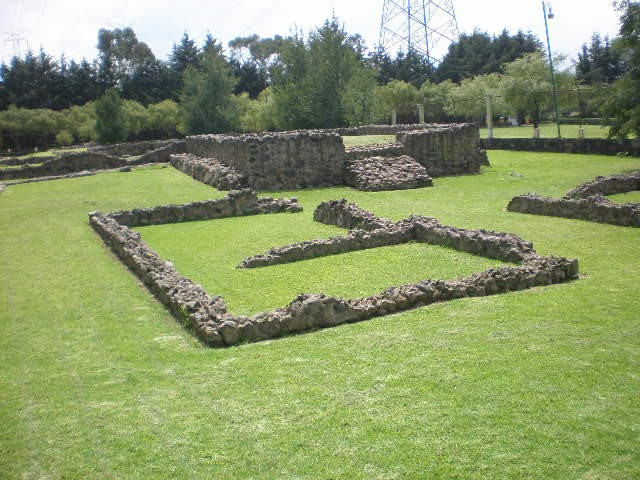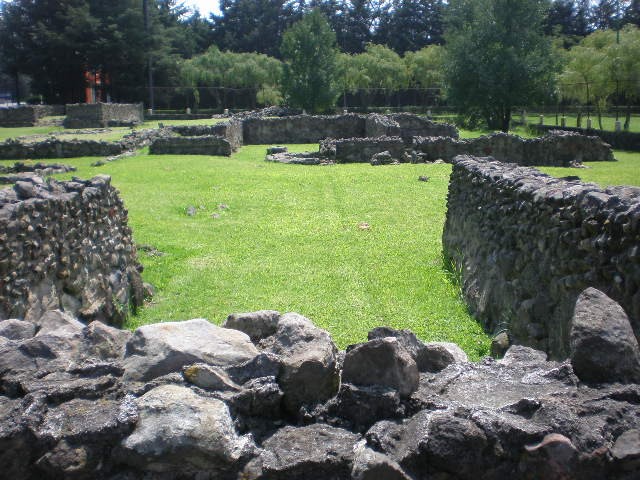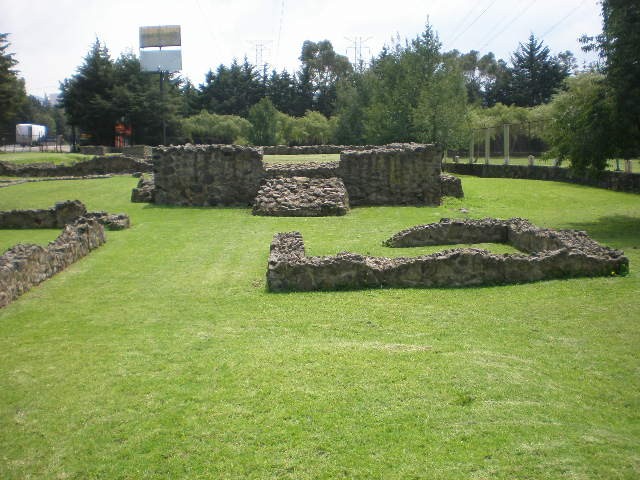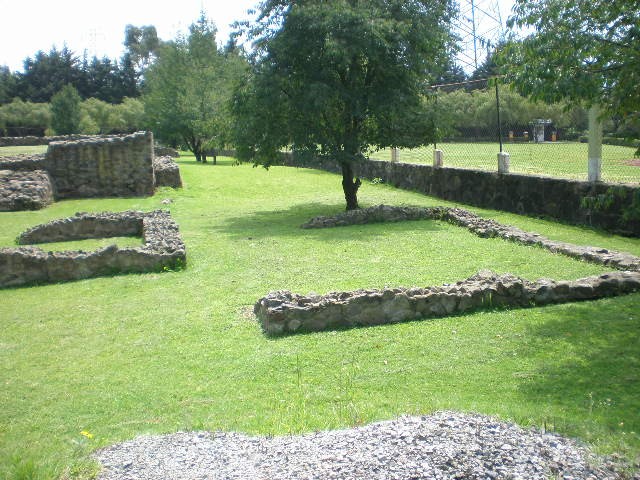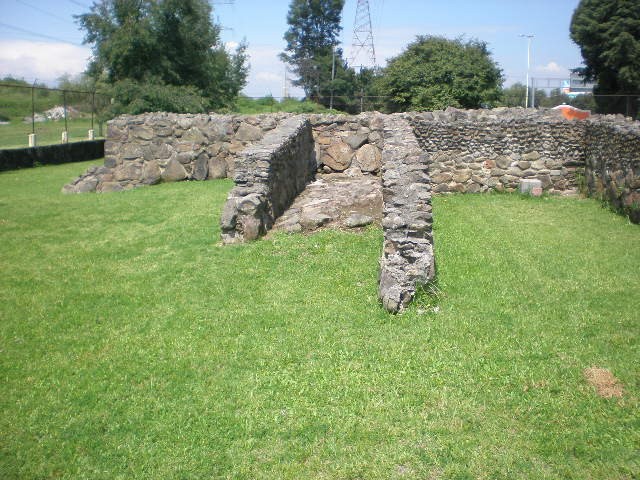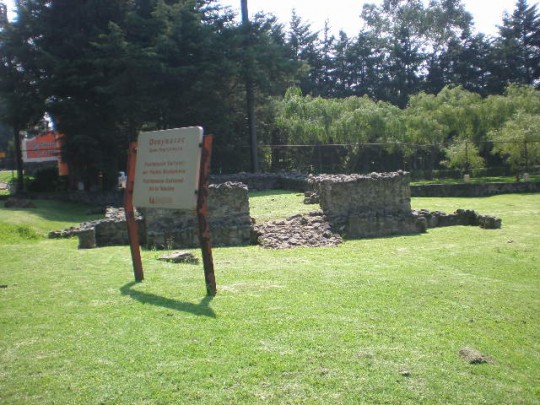Ocoyoacac
On the nose of the ocoquahuitl (ocote pines)
Possibly inhabited by immigrants from Teotihuacan, this architectural complex is made up of clusters of very simple rooms.
About the site
The archeological zone lies on the western side of the low hills of Sierra de las Cruces, in the site known as Tlalcozpan. Its occupation dates from 450 AD and continued until 650 AD (Classic period). At the time, the Valley of Toluca was occupied by farming groups from the Otomi family. The inhabitants of Teotihuacan then settled in the region. Their presence has also been confirmed in other towns, such as Metepec, Calixtlahuaca, Ojo de Agua (in Tenango del Valle), Los Cerritos, Santa Cruz Azcapotzaltongo, Rancho la Mora (in Toluca), Villas del Campo and Las Fuentes (in Calimaya), San Mateo Atenco and San Antonio La Isla.
The diversity of ecosystems and the richness of natural resources existing in the Valley of Toluca offered the necessary conditions for human subsistence. On the alluvial plain, the new settlers found lakeside resources and fertile lands, and on the hills, terrain suitable for growing corn, squash and beans. Moreover, the wooded area provided them with timber and the opportunity for hunting and gathering fruit.
The Valley of Toluca was therefore characterized by settlements of people from Teotihuacan. It is possible that they sent various products to the great metropolis to support their people, who could thereby supply themselves with agricultural and lake produce, as well as grasses, lake fauna, lime and timber, all of which was transported via communication routes that had been established long ago.
In Ocoyoacac, simple rooms and ceremonial areas were constructed that incorporated ideas, customs or fashions from Teotihuacan, which is reflected in the manufacture of vessels, figurines, objects for grinding and stone items discovered during site excavations.
Contact between the population of the Valley of Toluca and Teotihuacan is also evident from materials such as green obsidian (trade in which was controlled by Teotihuacan at the time), as well as slate and pottery imported from the big city. Customs and rites were also adopted from there, such as the Mesoamerican ballgame, the way they buried their dead and the cults of Quetzalcoatl and Tlaloc.
The diversity of ecosystems and the richness of natural resources existing in the Valley of Toluca offered the necessary conditions for human subsistence. On the alluvial plain, the new settlers found lakeside resources and fertile lands, and on the hills, terrain suitable for growing corn, squash and beans. Moreover, the wooded area provided them with timber and the opportunity for hunting and gathering fruit.
The Valley of Toluca was therefore characterized by settlements of people from Teotihuacan. It is possible that they sent various products to the great metropolis to support their people, who could thereby supply themselves with agricultural and lake produce, as well as grasses, lake fauna, lime and timber, all of which was transported via communication routes that had been established long ago.
In Ocoyoacac, simple rooms and ceremonial areas were constructed that incorporated ideas, customs or fashions from Teotihuacan, which is reflected in the manufacture of vessels, figurines, objects for grinding and stone items discovered during site excavations.
Contact between the population of the Valley of Toluca and Teotihuacan is also evident from materials such as green obsidian (trade in which was controlled by Teotihuacan at the time), as well as slate and pottery imported from the big city. Customs and rites were also adopted from there, such as the Mesoamerican ballgame, the way they buried their dead and the cults of Quetzalcoatl and Tlaloc.
Did you know...
- Human burials accompanied by vessels were found at this site. Mortuary bundles were placed in cavities dug into the floors of rooms and then sealed with a coating on the floor.
An expert point of view

María del Carmen Carbajal Correa
Centro INAH Estado de México
Practical information
Temporarily closed
Tuesday to Sunday from 9:00 to 17:00 hrs
Free entry
Se localiza en el municipio de Ocoyoacac, Estado de México.
From Mexico City, take the Toluca-México Federal Highway 15 until kilometer 45.5.
Services
-
+52 (722) 167 1325
-
This email address is being protected from spambots. You need JavaScript enabled to view it.
Directory
Responsable
Sonia Georgina Sosa Chávez
This email address is being protected from spambots. You need JavaScript enabled to view it.
+52 (722) 213 9581


